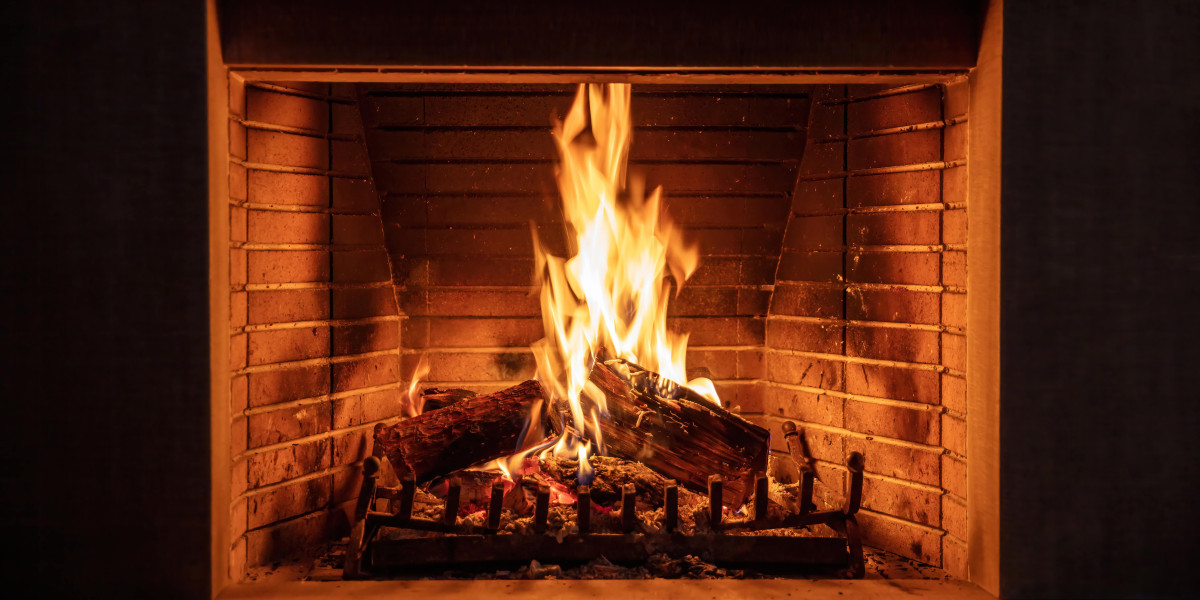In contrast to traditional open fireplaces, wood stoves are engineered and designed to burn firewood. This allows them to meet stricter emission regulations.
Wood burning stoves produce sparkling yellow flames and soft crackling noises. They also give warmth and a warm sensation. However, the smoke it creates contains carbon monoxide and toxic air pollutants like formaldehyde, benzene and polycyclic aromatic hydrocarbons.
Efficient
Fireplaces and stoves that burn wood provide a beautiful and natural heat to your home, they are also extremely efficient. A high-quality wood burner can attain an Ecodesign rating as high as 77 percent. It is essential to get the most value of your log stove particularly with the increasing energy costs. The good news is it's easier than ever to do!
A key factor in the effectiveness of a wood-burning stove can be is the water content of the wood. This is why we suggest only using wood that is seasoned, which has been dried for at least one year, and more often two years. The more dry the wood is more dry, the better it burns. This results in less smoke and less harmful emissions.
A wood-burning stove also is an eco-friendly fuel source which is beneficial to the environment. Additionally, by purchasing locally sourced firewood you are helping to promote the active management of forests, which is a great thing for wildlife.
The only thing a wood-burning stove requires in terms of maintenance is that you regularly remove and eliminate the ash. This can be a bit of a hassle but is well worth it in order to ensure you get the most heat from every log. Furthermore that if you wait a couple of days for the ashes to completely cool, they can be reused as a non-toxic and eco-friendly ice melt. They can be used to polish jewelry and also absorb the odors.
A fireplace made of wood is a truly timeless classic. While they may be less popular than gas fires however, there's no denying the appeal and appeal of a roaring fire. They're ideal for cozying in the cold winter nights and are a perfect method of creating an inviting and warm space within your home. A high-quality wood burner will pay for itself for many years. Contact us today to learn more about how our skilled chimney sweeps can assist you in getting the most out of your stove.
Low Carbon
Burners that are clean and efficient are among the most efficient ways to save money on logs and keep your home warm. They also support local woodland management. This is a fantastic method to support wildlife in your area.
Wood-burning fireplaces and stoves create very little pollution if they are maintained properly and used with dry, seasoned firewood. If they are not properly maintained or use wood of poor quality, the smoke that is produced contains fine particles, often referred to as particulate pollutants that can cause irritation to the lungs and other body organs. Carbon monoxide, air pollutants that are toxic such as benzene and formaldehyde and polycyclic aromatic hydrocarbons are also in the. Inhaling these types of air pollution may cause irritation to the lung, coughing, wheezing and asthma attacks. It can even cause serious health conditions such as cancer, heart disease, or premature death.
Some people worry that using a wood-burning stove could contribute to climate change, but this is not necessarily true. Wood burning produces energy that is carbon neutral. Through the life of a tree it absorbs carbon dioxide and when it is burnt, the carbon absorbed is released back into the atmosphere.
The wood is local, which decreases the amount of pollution released during transportation. It is important to use hardwoods that are well-seasoned and of high quality. They burn longer and more evenly than softwoods.
Modern wood stoves, including those manufactured by Charlton & Jenrick, emit less carbon dioxide than older stoves. They have been tested and certified to meet 2020 EPA standards which are considerably more strict than previous emissions limits.
To prevent a build-up of exhaust within your home, all wood-burning stoves should be vented fully to the outside. By keeping the flames in the vicinity of the logs, and ensuring you make use of dry, seasoned wood and all our clean burn and DEFRA exempt stoves produce very clear exhaust and have particulate levels that are 60 percent or less below the DEFRA limit.
A wood burning stove equipped with a catalytic converter or hybrid unit could provide the most efficient low-carbon option for heating. These units ignite the gases and particulates that were ignited during the initial combustion in a subsequent stage by mixing them with superheated air. The remaining gases and particulates are then transferred to a catalytic unit for a final and third combustion. This further reduces emissions to levels far below the government standards.
Clean Burn
Cleanburn wood stoves burn fuel at the highest efficiency. This means that there are fewer dust emissions into the atmosphere when burning wood. The stove's air management system controls the intake and venting of gases, ensuring that the combustion process takes place in a sealed, controlled environment. It also regulates flame height to maximise heat output and minimize emissions.
This means that your chimney and its surroundings will be cleaner than older stoves. Particulate matter (also known as particle pollution) caused by incomplete combustion of wood causes respiratory problems such as coughing and wheezing in people and can contribute to the development of heart diseases, stroke, diabetes and other serious health problems. Wood burning also contributes to poor air quality in cities.
Smoke from poorly burned timber contains fine particulate pollutants and harmful air pollutants such as carbon monoxide and other hazardous air pollutants such as nitrogen oxides as well as volatile organic compounds (VOCs), benzene and formaldehyde. These particles can penetrate deep into the lungs and other organs and cause discomfort, damage and even death. Airborne dust can also damage surfaces in your home, giving them a gritty feel.
It's important to use only good quality, seasoned and dried firewood for your fireplace with a wood burner. The most effective woods for heating are hardwoods, such as beech, ash, and oak. Hardwoods are extremely dense and have higher BTU content than softwoods. They also provide more heat.
Contact your local authority to find out whether they have rules regarding wood burning. These rules could include rules regarding odors or nuisances and visible emissions or smoke opacity restrictions.
It is crucial to keep the glass of a stove with an open front that is free of deposits and dirt. This can be done using dry cloths or oven cleaner spray. You can also add bicarbonate soda and water to the glass.
Regular maintenance of your stove and chimney is also vital. This includes regular chimney cleanings that remove creosote as well as ensure proper functioning of the flue. You should also mark the dates of periodic inspections on your calendar. This will help you prevent costly repairs and extend the life of your wood burner.
Low Maintenance
Many people prefer installing wood-burning Fireplaces And Stove due to the natural warmth they create. However, this type of fire requires a bit of upkeep and maintenance. The chimney, flue, and stove can all be the cause of house fires, if they're not maintained and cleaned regularly. They also provide warmth in the event of an electrical outage, particularly during winter storms, when branches of trees may fall and power lines could be knocked down.
By using a wood stove to heat your home, you will reduce your carbon footprint as compared to other fossil sources of fuel like gas. Modern wood stoves and inserts are made to meet EPA (Environmental Protection Agency) standards which mean they emit very little carbon dioxide. The more well-seasoned wood that you use the more efficient the stove will be. You'll need less wood to generate the same heat.
These fireplaces require some maintenance and attention, including making sure they are not in close proximity to the ignition source and that a screen is in place. The flow of air will be improved by keeping the grate free of ash and debris. This will help keep the fire burning longer and your home in good order. It is recommended that your stove and chimney swept every year at least two times to avoid creosote accumulation, which can be a fire hazard and a blockage that can hinder ventilation.
A wood burning stove has to be tended constantly and it could take some time for a beginner homeowner to learn how to ignite, light and maintain a constant fire in the fireplace. Once you've learned the art, your wood burner will be an excellent source of warmth and comfort within your home.
Wood burning fireplaces have been around in a variety of forms for more than 500 years and they've gained a new following due to their effectiveness, sustainability, and the natural warmth and smell of real wood. Talk with your local Regency dealer about the benefits of wood stoves or inserts for your home if you're planning to buy a new heater.









